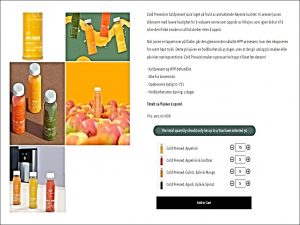
The term “user experience” usually describes how a customer feels after using a service. It’s all about the look, the logo, the interface, and the features of a website or an app.
It’s a common fact that a brand’s success may depend on the quality of its customer experience. It goes beyond meeting an individual’s immediate requirements. Interface design, graphic design, industrial design, and research on user behaviour all fall under this umbrella.
Measuring UX satisfaction can be crucial for a business owner. To solve this issue you can use a variety of KPIs to evaluate the efficacy of your user experience (UX) strategy. You can build your website or mobile app better by estimating, comparing, and tracking the competitors’ UX interfaces.
Effective UX design guarantees first-rate quality in both the app and the user’s personal website.
Brands usually utilized to entice buyers with unique logos and images as a basic step of interactive UX. This would help consumers differentiate between different brands. These days, a brand’s success can be measured how happy its customers are with the product. The UX is playing the main role of creating brand identity of a product or a service.
This article will discuss user experience and brand perception for B2B businesses
How to Connect User Experience and Brand Perception in B2B Businesses?
User satisfaction is an essential indicator of brand success. But why is user experience so important? Let’s have a look-
- Create Recognizable Actions for Your Brand
- A Measurement of Traffic Involvement
- Use Conversion Tracking to Evaluate Sales and Marketing Efforts
- Finding How Happy your Users are
- Enhanced Productivity and Employee Retention
Way 1- Create Recognizable Actions for Your Brand
In today’s market, consumers expect excellent service from any company they are dealing with. This allows businesses the opportunity to plan what they should do. They consider the value that their product adds to the existence of their clients. To make anything unique, you need to think outside of the box. More consideration should be given to the actions and interactions that shape the user’s perceptions and overall impression.
When creating branded interactions and activities, companies typically consider a variety of interactions. For example, Voice-activated interfaces, bots, virtual reality add-ons, and Slack plugins are all examples of such points of contact. A company can increase user to increase engagement and satisfaction by implementing chatbots. This would propel the brand forward and encourage individualization.
Way 2- A Measurement of Traffic Involvement
Measurement of visitor involvement helps the website or page’s owner succeed in a business. Traffic measurement makes awareness regarding how much time people spend in the “flow” state, where they are entirely engaged. To keep a better track, you can use the proper CTA button.
According to LeadPage, more than 70% of websites for small businesses don’t have buttons that tell people what to do.
If you want to know how many people visit your website on a regular basis, this is crucial information to have. However, this figure needs to be integrated into the event and visit streams. At this point, you may be wondering, “Why is that so crucial?”
The reason behind this is, the lack of an immediate definition for the engagement metric is the reason for this. That’s why it interacts nicely with both quantitative and qualitative findings.
Way 3- Use Conversion Tracking to Evaluate Sales and Marketing Efforts
The ease of use (UX) of a website affects how well its marketing efforts work. In the case of conversion rate, what does that number really mean?
It is a way to measure how loyal a group of people is. You may need to make a meeting or sign up for a newsletter as part of your duties. This hurts people new to the site but might become regulars.
Using conversion tracking can change the overall scenario of a B2B business. For example, a user’s tendency to take action can be gauged by using micro-conversion. Considerations like conversion rate and Net Promoter Score are additional. The Net Promoter Score (NPS) is a loyalty metric used to determine how likely a consumer is to recommend a product or service to their friends and family. Read here to know about the ideas of profitable B2B business.
Way 4- Finding How Happy your Users are
You may learn how satisfied your target audience is with your product or service by monitoring their user experience. This is inseparable from a user-friendly interface.
WebFX reports that a website’s design accounts for 94% of consumers’ initial judgments of a brand.
Use a website usability testing tool to see how easy it is for users to do essential tasks on your site, and then keep an eye on the most crucial UX metrics to find out how well your site performs in this regard.
The following user experience metrics should be tracked on your website:
- You can use the completion rate to see if your users follow the correct steps to finish their orders and interactions.
- Page load times that are too long and local or system-wide error messages that are difficult to understand are examples of usability issues.
- The time it takes to complete a task is one example of a task time metric. If the user is taking more time than planned, it may be time to rethink the interface.
- User happiness is measured by satisfaction with a specific task. on the other hand, usability is evaluated immediately.
- This user experience statistic monitors mistakes made by users while completing a task. There should be fast action taken if there are too many mistakes.
Way 5- Enhanced Productivity and Employee Retention
With technology, businesses can learn more about their workers and customize perks for each individual. Using cutting-edge design methods helps companies enhance both their UX and EX. Measuring user experience (UX) improves productivity and staff retention. It cuts down on production expenses and inventories at the same time.
IT systems and commercial applications also benefit from UX design. Therefore, it is essential to evaluate UX. Employee output rises when business and communication systems are intuitive to use.
To enhance productivity and employee retention in a B2B wholesale business, a storeowner can use a third-party bulk order app with a user-friendly UX. In Shopify, several applications are available, and the user interface is simple and customer-friendly.

Here, we can see a storeowner selling juices using a bulk order application at Shopify. The UX interface of the application is quite appealing, which is enough to grab the attention of eCommerce B2B customers.
Bottom Line
Focusing on user experience and brand perception is crucial in today’s B2B industry. Increase traffic, sales, and company growth by focusing on UX design and branding. To make a website user-friendly, concentrating on the UX interface of a website is essential.
